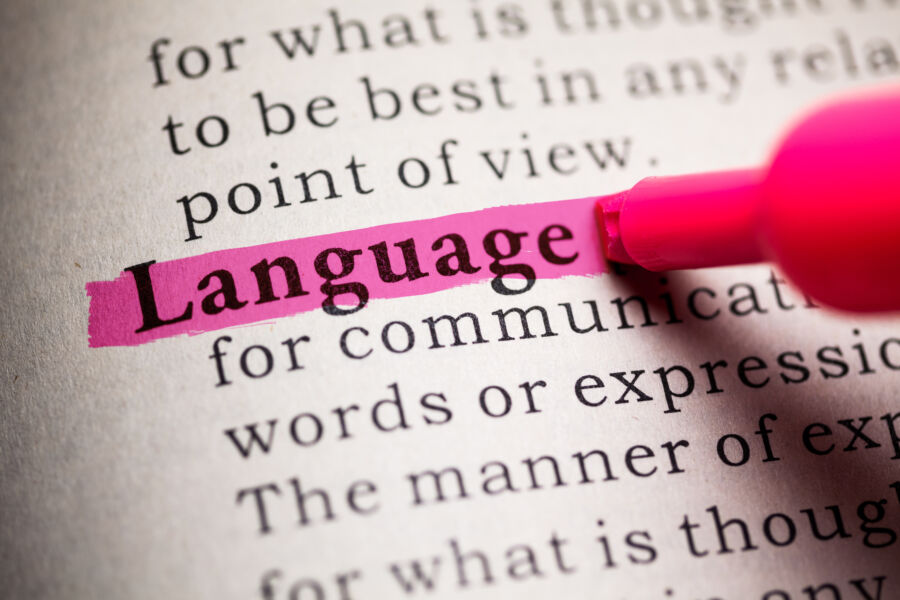
Travel vs Traveling: Understanding the Key Differences
While the words “travel” and “travelling” seem similar, they vary in meaningful ways. One key factor is location—”travel” is often used in American English, whereas “travelling” is more popular in British English and other Commonwealth nations. It’s not just about spelling but underlying customs of language throughout English-speaking parts of the world.
For a more nuanced understanding, consider that “travel” can act as a noun and verb, pointing to a journey itself, while “traveling” mainly showcases the ongoing action of moving to a chosen place. Language, after all, hides unexpected intricacies. Using these two terms correctly will pave the way for efficient communication across global spheres, even before reaching your desired destination.
“travel” generally denotes the overall movement of people or things from one place to another, while “traveling” refers to individuals moving to specific destinations. For example, when discussing a group tour, we use “travel,” whereas if discussing an individual’s journey to a particular location, we use “traveling.”
Table of Contents
- Travel Vs Travelling: Key Distinctions
- Embracing Diversity
- Variation In Meaning And Usage
- Illustrating with Different Sentence Contexts
- Navigating Literature and Writing
- Grammatical Nuances and Their Forms
- Forms of “Travel” and “Travelling”
- Exploring the Reason for the Travel/ing Variation
- Historical Evolution of Language
- Regional Influences on Language
- Evaluating ‘Travel’ and ‘Travelling’ in Sentence Usage
- Book Your Dream Experience
- More Travel Guides
Travel Vs Travelling: Key Distinctions

Language is an intriguing thing, isn’t it? Words and their spellings can vary depending on your location. “Travel” and “traveling” are perfect examples of this delightful quirk. It’s not about one being right and the other wrong; it’s more about regional preferences and conventions.
In American English, “travel” without the double ‘l’ is the preferred spelling. We typically use “travel” to refer to the resulting movement rather than the individual activity of going to a specific place. On the other hand, Brits tend to add an extra ‘L’ and prefer “traveling” when they want to convey a similar idea. The difference lies in the variation of the present participle form of the verb “to travel.”
This spelling difference extends to other forms of the verb as well. British English also prefers “traveled” with two ‘l’s, while American English uses just one ‘l.’ Similarly, publications that use “traveling” often also use other British English spellings like “color” or “flavor.” It all comes down to regional dialects and language conventions.
Embracing Diversity

Just like savoring different types of cuisine or admiring various art forms, embracing linguistic diversity broadens our world perspective. It’s like traveling through words—immersing ourselves in the nuances of language enables us to explore new cultural landscapes.
So it’s delightful to recognize these subtleties and nuances, understanding that neither spelling is more ‘correct’ than the other. Language differences are just as enriching as our individual experiences and should be cherished for their ability to connect us to distinct corners of our shared planet.
Now that we’ve explored these linguistic subtleties let’s investigate how these variations manifest within different English-speaking regions across the globe.
Variation In Meaning And Usage

Like any other language, English has its nuances. “travel” and “travelling” vary based on context and location. However, understanding these subtle differences can provide greater insight into their application.
Let’s start with the word “travel.” When used as a noun, it refers specifically to the movement itself, representing the collective action of individuals journeying from one place to another. On the other hand, when utilized as a verb, it encompasses physically moving oneself, describing the action undertaken during a journey.
Now, turning our attention to “traveling,” we find it is the present participle form of the verb “travel.” It implies an individual moving towards a specific destination, emphasizing the personal aspect of the journey from start to finish. This distinction illustrates how language encapsulates our interaction with the world around us.
For example, consider the sentence “I love to travel.” Here, “travel” is used as a verb to express the enjoyment of physically journeying from place to place. Conversely, when stating, “I am traveling to Paris,” “traveling” emphasizes moving oneself toward a particular destination in Paris.
These subtle linguistic variations may seem inconsequential initially, but they reflect regional language conventions and cultural influences on word usage. For instance, in American English, “travel” and “traveling” are commonly spelled with one “l,” while in British English, they are typically spelled with two “l’s.”
Understanding this variation in meaning and usage enables us to navigate language nuances effectively and appreciate how diverse linguistic customs shape communication.
The intricacies of language usage become even more apparent when illustrated within different sentence contexts. Let’s explore these examples next.
Illustrating with Different Sentence Contexts

The choice of “travel” or “traveling” typically depends on the intent and context of the sentence. For example, in a general concept, such as a travel blog, you might write, “Adventure travel is a popular choice for many tourists.” Here, “travel” refers to people venturing to new locations, making it suitable for a broader context rather than a specific individual’s activity.
If we shift the focus to the individual act of going to a specific place, then “traveling” becomes more appropriate. For instance, considering British English usage, a traveler might say, “I am traveling to London tomorrow.” In this context, “traveling” directly refers to a specific person heading to a particular destination rather than just movement in general.
It’s important to recognize that different sentence contexts call for different words to be used. Despite being used interchangeably at times, each word carries its nuance that can significantly shape the tone and emphasis of the sentence.
Understanding these subtle distinctions can help determine which form—”travel” or “traveling”—is most suitable for conveying your intended message.
Let’s look at another example scenario: Suppose you share tips for first-time travelers. You might use the phrase “packing for travel” as it encompasses all travelers’ general preparation and journey experience. In contrast, when addressing personal experiences, you might use “I love traveling through Europe” to convey the specific joy of moving through various European destinations. Each usage reflects the underlying intention and conveys different shades of meaning.
In essence, choosing between “travel” and “traveling” involves contemplating the grammatical differences and understanding how each word fits within the context and desired impact on the reader.
By examining diverse sentence contexts, we better understand how and why these two words are utilized in different American and British English situations. This deepens our comprehension of their nuanced applications and ensures precise communication in various settings.
Now that we have a firmer grasp of linguistic nuances let’s explore the world of literature and writing.

Regarding literature and professional writing, words are chosen with specific intent. In this case, the choice between “travel” and “traveling” follows the spelling conventions of the specific English dialect being utilized. Writers and editors adhere to consistent language styles in their work, aligning with the preferred spelling of their intended audience.
For instance, American publications use the one-L version (‘traveling’) as written in American English, which has become standard practice. On the other hand, British English conventionally leans towards using the two-L version (‘travelling’). This choice extends beyond just ‘travel’; similar spelling variations exist for terms such as ‘traveled’ or ‘traveler’ in American English vs. ‘traveled’ or ‘traveler’ in British English.
It’s not just about the spelling; other language differences can influence a writer’s style. For example, publications that use the two-L version often also use other British English spellings like ‘color’ or ‘flavor.’ These choices are deliberate and aimed at maintaining consistency and coherence within a piece of writing. It is not merely a matter of personal preference.
Adhering to these orthographic rules ensures that a piece maintains a professional and polished appearance and resonates well with readers familiar with those conventions.
Understanding these nuances is essential for any aspiring writer or editor. It’s not just about knowing the definitions; it’s about comprehending how language shapes comprehension, perception, and reception of written works.
Consider it akin to learning different dialects within a language- while they may be close to each other, the subtle differences can significantly impact how the message is conveyed.
Some may argue that these differences are insignificant in the grand scheme of things, but writers understand that details matter. Precise language choices demonstrate care for the reader and respect for their expectations.
In essence, understanding the differences in usage between “travel” and “traveling” is essential in producing clear, coherent writing that resonates with its intended audience in literature and professional contexts alike.
Moving forward, let’s now explore the intricate grammatical nuances and their impact on various linguistic forms.
Grammatical Nuances and Their Forms

Understanding the differences in usage between “travel” and “travelling” is crucial for effective communication. It’s not just a matter of personal preference or regional variations; specific rules dictate when each form should be used.
First, let’s clarify that “travel” can function as nouns and verbs. As a noun, it refers to traveling from one place to another, whereas as a verb, it describes the action of traveling. On the other hand, “traveling” is the present participle form of the verb “to travel,” specifically referring to the ongoing action of moving oneself from one place to another.
Forms of “Travel” and “Travelling”

So, why does this matter? Using the appropriate form according to the context helps maintain clarity in communication. Whether discussing an individual journey or travel in general, understanding these subtleties ensures your message is conveyed accurately.
For example, discussing your love for exploring new places, you might say, “I enjoy traveling to new destinations whenever I can.” Here, “traveling” is used as a verb to describe the ongoing activity of visiting new places. However, if you’re sharing your plans for an upcoming trip, you would use “travel” as a noun: “I’m excited about the travel adventure in Europe next week.”
The distinction becomes even clearer when considering larger concepts involving many people visiting different places. Generally, we use “travel” to refer to the resulting movement rather than the individual activity of going to a specific place. Understanding these grammatical nuances can make all the difference in effectively conveying your intended message.
Now that we’ve clarified these subtle differences let’s examine them in more detail to see how they impact language and communication.
Exploring the Reason for the Travel/ing Variation
The English language is a living, ever-changing entity. So why do we have these differences in spelling when it comes to “travel” and “travelling”? The simple answer is that it comes down to where you are. Let’s further unravel this interesting phenomenon.
Historical Evolution of Language

English has spread far and wide over the centuries, evolving differently in various locations as it adapted and incorporated local influences. As a result, different dialects of English emerged across the globe. These variations gave rise to differing spellings, pronunciations, and even meanings for certain words.
Regional Influences on Language

The difference between “travel” and “travelling” is just one example of how regional dialects can shape our language. In the UK and Commonwealth countries, people typically use the double-L version (‘traveling’), reflecting British spellings like ‘color’ and ‘flavor.’ Meanwhile, in the U.S., shorter spellings like ‘traveling’ are preferred. These distinctions highlight linguistic differences and give insight into cultural and historical influences on language variations.
Consider languages as trees: they start from one trunk but spread out into multiple branches as they grow and adapt to their environment. Each branch represents a unique regional influence that shapes and molds the language in a distinct way.
For example, picture a traveler moving from England to America during colonial times. They would have carried their version of English with them. Over time, as they mingled with other settlers and adapted to their new surroundings, their language changed too.
Understanding how language evolves helps us appreciate the richness of its history and cultural connections. It also reminds us that language is not stagnant but a dynamic reflection of human experience and interaction.
The origins of these variations shed light on how language adapts and changes over time, reflecting the diverse cultural and historical influences that continue to shape our communication today.
Evaluating ‘Travel’ and ‘Travelling’ in Sentence Usage

The choice between “travel” and “travelling” in sentences might seem trivial initially, but it can make a big difference in how you communicate. Let’s break down their usage to understand how they fit into different contexts.
When to use “travel”:
- General Movement: Use “travel” when talking about movement in general or the overall concept of people going to different places. For example, “Global travel has declined due to recent events.”
- Collective Reference: It is preferred when referring to the collective movement of individuals to different places, such as “I love to travel to new countries.”
When to use “traveling”:
- Specific Action: Reserve “traveling” for specific, individual action or when indicating the activity of a particular person moving to a specific destination, like, “She enjoys traveling to remote locations.”
- Continuous Movement: describes an ongoing process and is generally used as the present participle form of the verb “to travel.”
These slight differences in usage are essential for effective communication because they can completely alter the meaning and emphasis of a sentence.
Additionally, because English is a global language, understanding these nuances becomes even more crucial when communicating with speakers from various regions. The context in which you use “travel” or “traveling” carries subtle connotations that can significantly impact how your message is interpreted.
For instance, consider the following sentences:
- “I have always loved to travel to exotic destinations.” (general movement)
- “She is currently traveling through Europe.” (specific action/individual movement)
- “Our company promotes sustainable traveling practices.” (continuous action)
In these examples, using either “travel” or “traveling” subtly changes the focus and intent of each sentence.
For further insights into creating compelling and engaging travel narratives that resonate across diverse cultural contexts, visit Real Journey Travels to explore diverse perspectives on global travel. Understanding the nuances between “travel” and “travelling” can help elevate your writing and effectively convey your message across cultural boundaries. Contribute your travel story by submitting our form.



